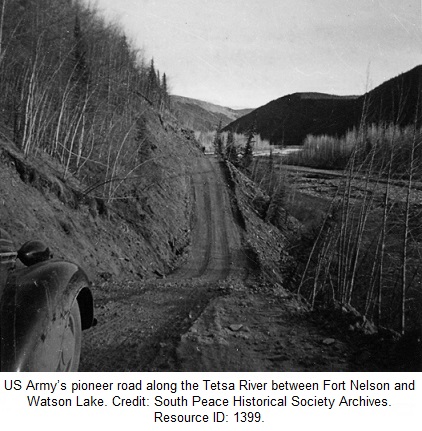Construction Crews
The construction work involved 394 officers and 10,765 enlisted men divided into seven regiments working on six sectors. Each sector had six construction crews and each crew was responsible for building 32 km of road.
First, locating parties went in to mark the way. Then the advance tractors cleared the area. ‘Sight surveying’ was often used to determine a direction. This involved climbing a tree or standing on a bulldozer, picking a point in the distance, and then working towards it while trying to avoid muskeg, steep hills, deep valleys and any other obstacles.
After the locating parties were finished, the bulldozers did the leveling and rough grading. Then the culvert crews followed. Lastly the grading crews came in and put stable surfaces on the road. Once they were finished, each team would leapfrog to the front of construction and start again.
The United States Army Engineers’ pioneer road was finished on 28 October 1942, when the eastern and western sections met at Contact Creek, British Columbia. Eight months after construction had started; the Alaska Highway was officially opened for use on 20 November 1942.
Read More

